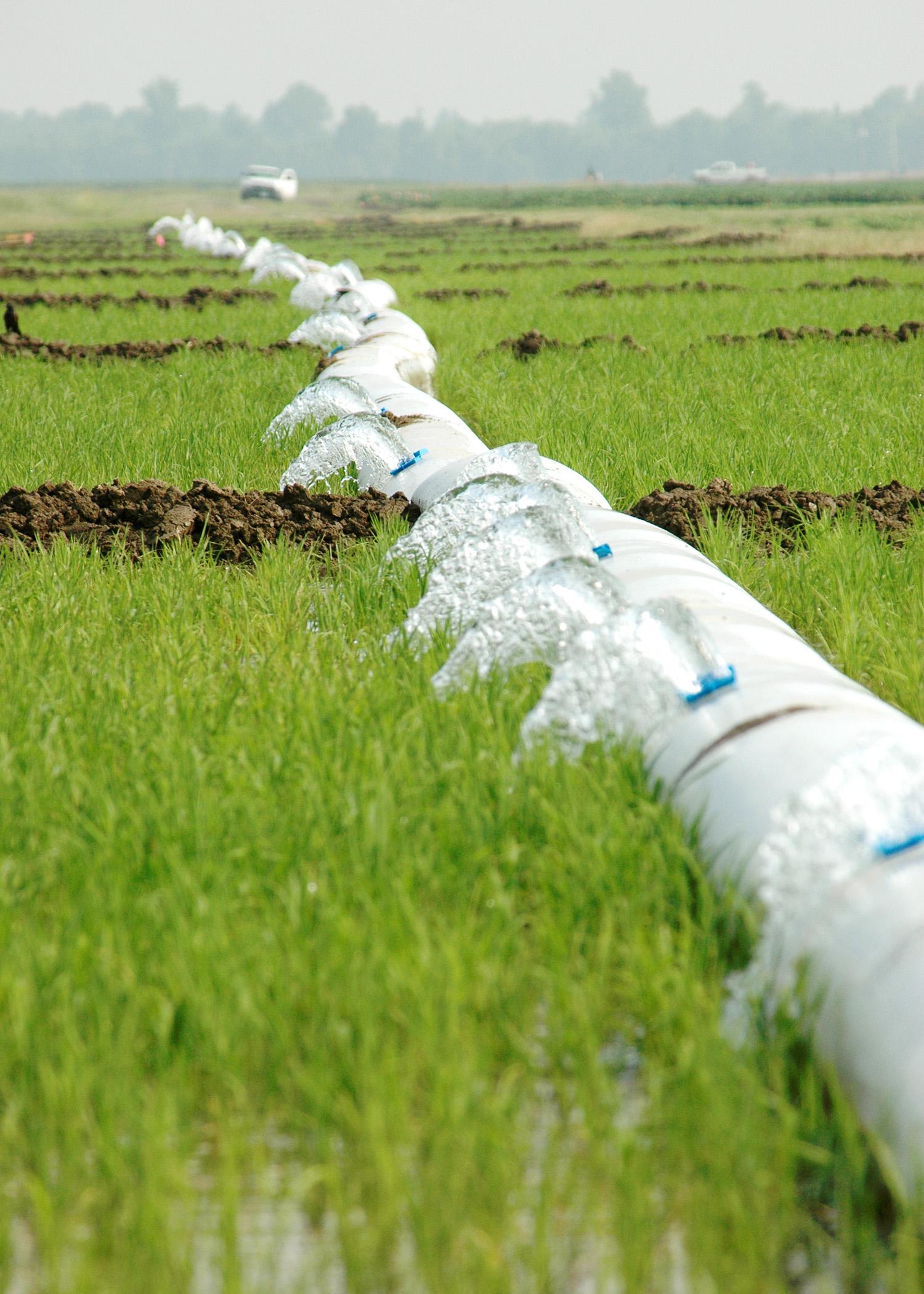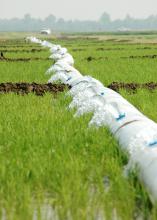Information Possibly Outdated
The information presented on this page was originally released on November 1, 2012. It may not be outdated, but please search our site for more current information. If you plan to quote or reference this information in a publication, please check with the Extension specialist or author before proceeding.
Rice irrigation method saves fuel, water, money
MISSISSIPPI STATE – Ten years of research indicates that a water management strategy can save rice producers money on fuel and conserve water without hurting yields.
Joe Massey, a scientist with the Mississippi Agricultural and Forestry Experiment Station and professor in Mississippi State University’s Department of Plant and Soil Sciences, has focused his career on water conservation in agriculture.
With funding from the Mississippi Rice Promotion Board and Mississippi Water Resources Research Institute, Massey worked with other MAFES researchers and rice growers to determine if intermittent flooding could work in Mississippi, as it does in Asia.
“These Mississippi farmers flood their rice fields and then let the floodwaters naturally subside,” Massey said. “When saturated mud is exposed in the upper half of the paddy, they pump back to a full-flood depth of about four inches. Growers using this method might pump water onto their fields only every five to nine days, depending on weather and soil conditions.”
By allowing the water level in the paddies to decrease, growers can better capture rainfall.
“One grower using intermittent flooding in 2011 subjected his field to eight wetting and drying cycles, resulting in substantial savings of water and fuel,” Massey said. “For every inch of rainwater that is captured or groundwater that is not pumped, farmers save about one gallon of diesel fuel per acre.”
For large operations, such savings can add up to tanker truckload quantities of fuel.
“Typically we get 10 to 14 inches of rain during the growing season in the Mississippi Delta,” Massey said. “If rice paddies are completely filled, there is no room to capture rainfall -- it rains, and the water runs off. Runoff may carry away nutrients and other chemicals that are expensive to purchase, and it may also contaminate our streams and rivers.”
Massey said even partial adoption of intermittent flooding can save producers money on energy and can relieve stress on those producers who struggle to maintain their rice crop when other crops also need watering.
Massey has studied how intermittent flooding affects both yield and quality.
“To date, rice yields on intermittently flooded fields have been the same or slightly higher, and milling quality has been unaffected when compared to rice that is continuously flooded,” he said. “We’ve tested this water management strategy on up to 15 rice varieties in replicated trials in production-scale fields on different farms.”
These results rely on producers’ use of multiple- or side-inlet irrigation, where irrigation is distributed to each paddy through plastic tubing.
Massey said when producers combine intermittent flooding with multiple-inlet irrigation, average water use has been close to that of zero-grade rice fields. Intermittent flooding helps maximize rainfall capture and reduce over-pumping, while multiple-inlet irrigation distributes water to each paddy individually.
Massey also found that, in trials to date, intermittent flooding has not created measurable problems in terms of weeds, diseases or nutrient loss.
“Some growers are concerned the flood levels would not be judged accurately and the paddies would get too dry, so we’re evaluating equipment to automate the process, such as pump controllers and water sensors,” he said. “A simple device that farmers can build in their own shop is a rice flood depth gauge that uses a seine float, PVC pipe and metal conduit.”
Dean Pennington, executive director of the Yazoo Mississippi Delta Joint Water Management District, said water conservation is the most cost-effective way to manage water resources.
“As we work to balance the water budget in the Delta, conservation efforts like intermittent flooding are the front line of the attack,” Pennington said. “Landowners and operators can be actively involved in a solution that works for them individually and benefits the entire Delta.”
Pennington said the Tallahatchie and Mississippi rivers could supply water for irrigation. Building the required infrastructure would be costly, but it may be a viable option for Delta producers.
“Conservation is where you start. It’s generally more cost effective to conserve water than to develop a new supply,” Pennington said. “It’s better not to pump a gallon of water and save it for later than to invest in a new system.”
Massey said Mississippi’s water and soil resources will only become more important over time.
“The 2012 drought in the Midwest is an example of how the ability to irrigate is often a make-or-break factor in terms of the overall success of farmers. If we continue to strive to make efficient use of rainfall and our other water resources, everyone benefits,” Massey said.
With a production value of $146 million in 2011, rice ranked eighth among Mississippi’s agricultural commodities.







